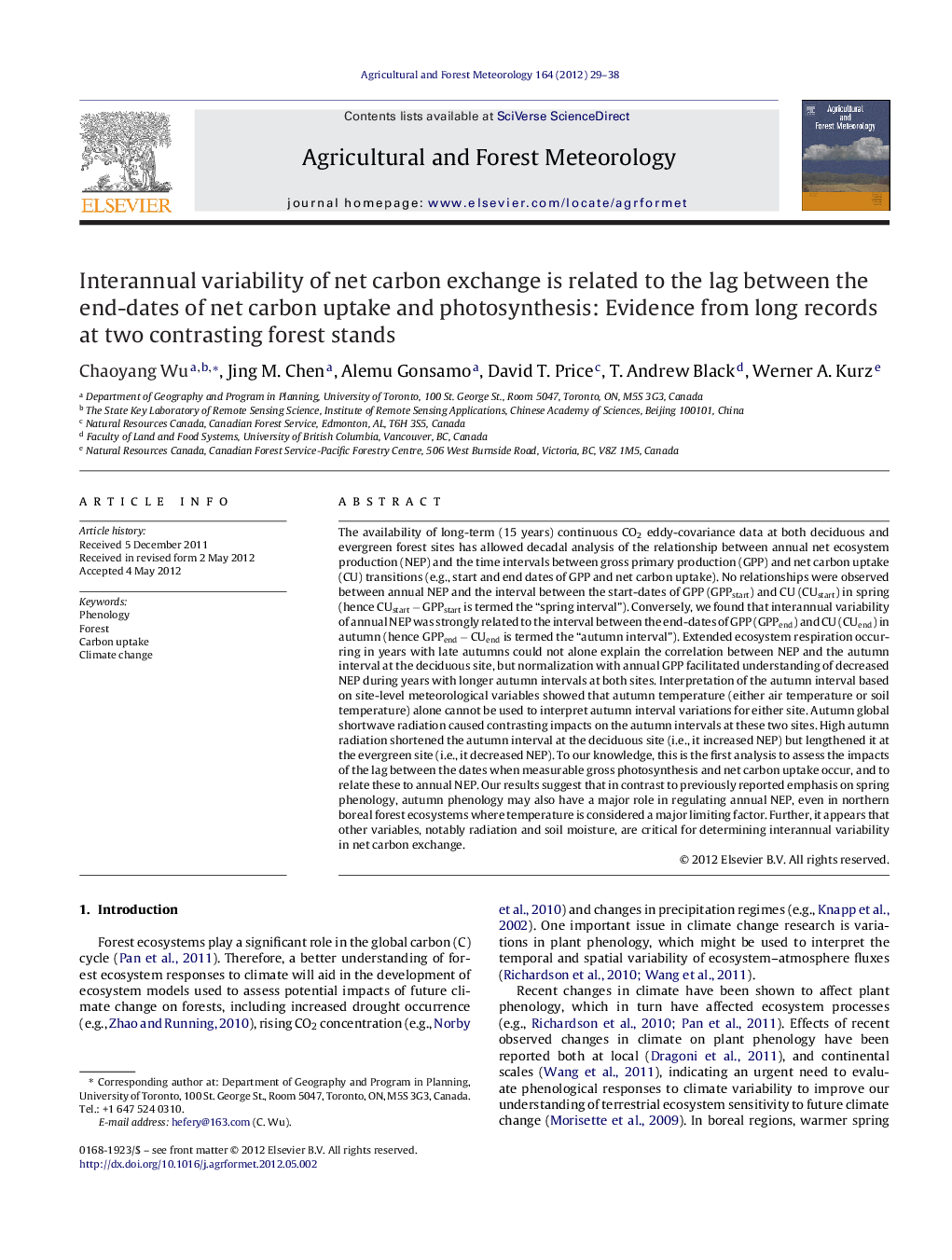| کد مقاله | کد نشریه | سال انتشار | مقاله انگلیسی | نسخه تمام متن |
|---|---|---|---|---|
| 81909 | 158360 | 2012 | 10 صفحه PDF | دانلود رایگان |

The availability of long-term (15 years) continuous CO2 eddy-covariance data at both deciduous and evergreen forest sites has allowed decadal analysis of the relationship between annual net ecosystem production (NEP) and the time intervals between gross primary production (GPP) and net carbon uptake (CU) transitions (e.g., start and end dates of GPP and net carbon uptake). No relationships were observed between annual NEP and the interval between the start-dates of GPP (GPPstart) and CU (CUstart) in spring (hence CUstart − GPPstart is termed the “spring interval”). Conversely, we found that interannual variability of annual NEP was strongly related to the interval between the end-dates of GPP (GPPend) and CU (CUend) in autumn (hence GPPend − CUend is termed the “autumn interval”). Extended ecosystem respiration occurring in years with late autumns could not alone explain the correlation between NEP and the autumn interval at the deciduous site, but normalization with annual GPP facilitated understanding of decreased NEP during years with longer autumn intervals at both sites. Interpretation of the autumn interval based on site-level meteorological variables showed that autumn temperature (either air temperature or soil temperature) alone cannot be used to interpret autumn interval variations for either site. Autumn global shortwave radiation caused contrasting impacts on the autumn intervals at these two sites. High autumn radiation shortened the autumn interval at the deciduous site (i.e., it increased NEP) but lengthened it at the evergreen site (i.e., it decreased NEP). To our knowledge, this is the first analysis to assess the impacts of the lag between the dates when measurable gross photosynthesis and net carbon uptake occur, and to relate these to annual NEP. Our results suggest that in contrast to previously reported emphasis on spring phenology, autumn phenology may also have a major role in regulating annual NEP, even in northern boreal forest ecosystems where temperature is considered a major limiting factor. Further, it appears that other variables, notably radiation and soil moisture, are critical for determining interannual variability in net carbon exchange.
► Interannual variability of NEP was correlated with the autumn time interval.
► Ecosystem respiration alone cannot explain the autumn interval.
► Degree of autumn warming shows spatio-temporal differences.
Journal: Agricultural and Forest Meteorology - Volume 164, 15 October 2012, Pages 29–38